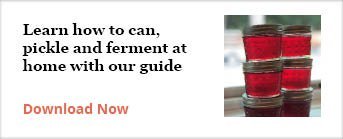I'm in mushroom ecstasy as this is a banner year on my property in Michigan for wild mushrooms! My Hen of the Woods mushrooms have returned in abundance so I have been busy cooking and preserving them which you can read more about in my How to Cook Hen of the Woods Mushrooms blog. In addition, I have two giant Chicken of the Woods mushrooms and between these two varieties I have about 100 pounds of mushrooms, and that doesn’t even include the Puff Ball mushrooms which haven’t come up yet.
That is a lot of mushrooms to go through, so I not only want to share with you how to clean and cook these mushrooms but give you some tips on how to preserve them. Chicken of the Woods and Hen of the Woods mushrooms generally weigh in between a pound and 10 pounds each and can regularly get much bigger than that. Most people would be hard pressed to eat 10 pounds of mushrooms in a week or two.
These are also expensive mushrooms if you can find them to purchase, so they are a true delicacy. You can certainly share some with your friends and family. In fact, I’m planning to wait to harvest some of the mushrooms I have until my sister comes to visit in a few weeks. I’m going to send some home with her for my family, who are all wild mushroom hunters and consumers. Even though I plan to share, I still have a ton of mushrooms. Therefore the recipes and ideas here are geared towards preservation.
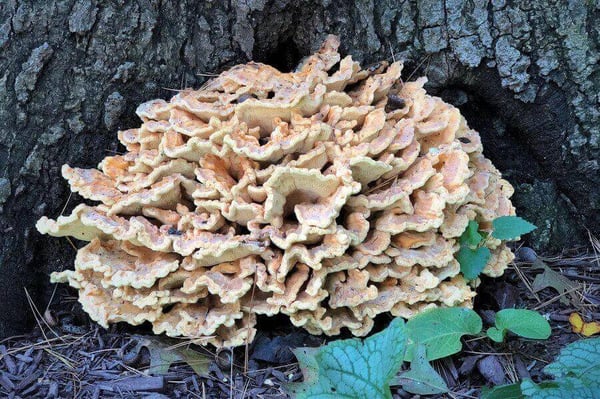
Let’s start with a little general information about Chicken of the Woods mushrooms. These are considered to be an edible mushroom, but there is a small percentage of people who can have a reaction to this mushroom. I always suggest consulting some authoritative websites that can help you make informed choices. When trying a new wild mushroom, sample a very small piece to confirm you do not have a reaction.
Once you have decided to jump on the Chicken of the Woods mushroom train, I think you will agree they are one of the prettiest of all mushrooms. They are a ruffled rainbow of beautiful golds, oranges and yellows (these colors should be bright, they fade as the mushrooms ages and the mushroom can get very tough and bitter with age). They are what are known as a shelf mushroom; they grow at the base or on the side of a tree in ruffled layers. It has no gills, but the under surface is covered in tiny pores.
There is mixed information out there on whether they cause a tree to rot or whether they attach to an already unhealthy tree, either way their presence indicates there is a rot going on in within the tree. I have one in my yard on an unhealthy white oak and one on a hickory that I would have considered healthy. The nice thing about foraging for these mushrooms is that they are easy to identify and easy to spot with their bright colors. Most people say they are called Chicken of the Woods mushrooms because they taste like chicken. Although they do have a robust flavor and meaty texture, I’m not sure they taste like chicken. My thought has always been they got their name because they resemble a cock’s comb but that may be just as much of a stretch.
When I harvest the mushroom, I cut it away from the tree leaving about an inch or two of the mushroom on the tree. This helps to ensure the mushroom will return the following year. The mushroom flesh closest to the tree or what I consider the center of the mushroom is the toughest part, so it's not as desirable anyway. Cleaning these shelf type mushrooms is time consuming, as there tends to be a lot of dirt, leaves, bugs (if you are afraid of bugs you may want to enlist some help here) and debris that collects between the shelves and actually can grow right into the flesh itself. After I remove the mushroom from the tree the next thing I do is remove any pieces that have a ton of dirt on them and rinse them separately before plunging into the whole lot into a sink full of water. This mostly encourages the bugs to come out of the mushroom and does a good general rinse. I then pull the mushroom apart in pieces, rinsing each piece as I go and cutting off anything that won’t rinse off.
I then pull the mushroom apart in pieces, rinsing each piece as I go and cutting off anything that won’t rinse off.
After cleaning the mushroom, I separated it into three piles: the most tender tips, the middle part which is a little more meaty and tough, and the toughest part, the part that attached to the tree.
I chose to dehydrate the toughest part of the mushroom. I have a dehydrator, but you can dry without one too, (I outline that in my How to Dry and Preserve Morel Mushroom post). These dried mushrooms would be best used by grinding them in a blender or coffee grinder and mixing them with salt for a great mushroom salt or making your own rub with it for chicken, pork, beef or potatoes. I haven’t developed a rub recipe yet, but I will add that later when I come up with a good one. The other thing these dried mushrooms will be excellent for is to make mushroom stock or dashi (Japanese word for stock). This stock can be used for risotto, soups and sauces.
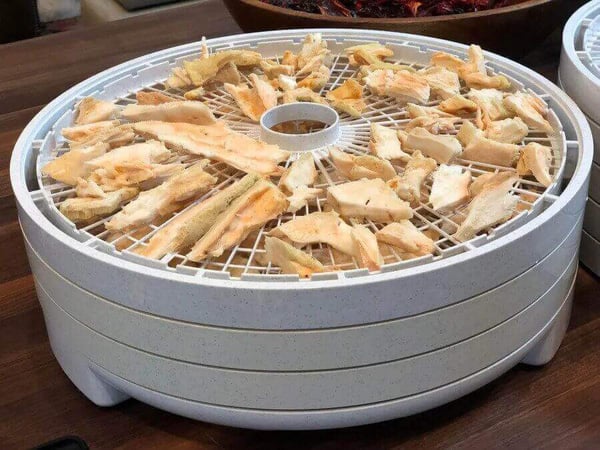
The bulk of the mushroom is the meaty center section. You could simply freeze this part, but my preference is to cook them first to remove most of the moisture. One of the best uses for this mushroom's meaty texture is in fillings or as a spread, us chefs call this a Duxelle. This recipe may not be a traditional Duxelle but I wanted it to remain more versatile so I could use it in many different ways, to stuff a chicken breast or pork chop, in a Beef Wellington, inside a crepe or as a topping on bruschetta. A Duxelle is basically finely chopped mushrooms cooked with shallots or onions, garlic, salt, white wine, pepper and oil. You can add herbs, or other seasonings or leave it plain like I did so when I take it out of the freezer I can add whatever I feel like.
An alternative is to take this mixture and dehydrate it into a mushroom jerky. I may try that as well!
Mushroom Duxelle
1 pound of mushrooms, chopped finely (I used a food processor)
3 cloves garlic, minced
1 large shallot, mined
½ cup olive oil
2 cups white wine
1 teaspoon salt
½ teaspoon black pepper, ground
In a large skillet heated over a low to moderate heat, add the oil, mushroom, garlic and shallots. Stirring frequently, sauté until the steam stops rising heavily from the mushrooms and the pan starts to get dry. Add the white wine, salt and pepper and cook until the mushrooms are tender and the moisture has evaporated. You may need to add water a few times as these mushrooms take awhile to get tender and a low boil seems to tenderize them better than sautéing by adding more oil.
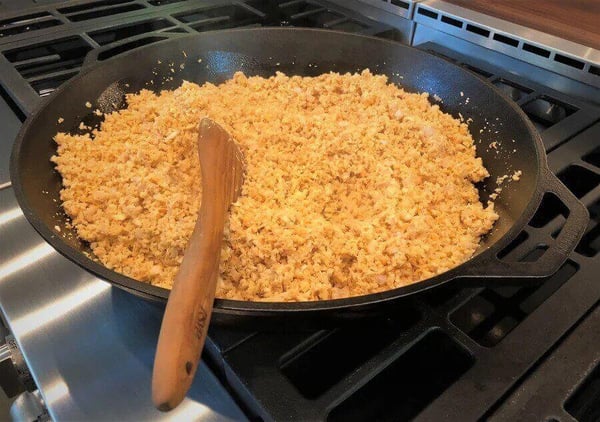
Let the filling cool and then put into plastic bag, I like to flatten them so they store easily in the freezer but also so they thaw quickly when I take them out later. I had three pounds of mushrooms and ended up with these three bags.
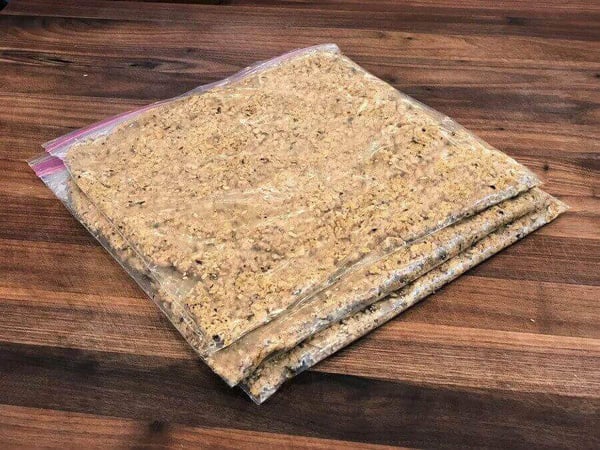
The tender tips are left, and these can be sautéed and used anywhere you use mushrooms: in an omelet, on top of your burger, in soup or as a side dish. Even the tender tips are very meaty and require a ton of butter, oil or liquid to keep them from drying out. In general, you won’t need to preserve these tips, this is the part I would cook and eat right away. But if you are like me and have more than you can eat, making a soup or sauce and canning it is your best bet to highlight the more delicate nature of the tender tips. I included a great mushroom soup recipe in my Foraging and Cooking Puffball Mushrooms post that you can use, but you may need to add more butter or oil while cooking the mushrooms.
I decided to make a Red Wine and Mushroom Sauce instead of soup this time. I didn’t thicken this sauce for two reasons:
- Thickeners can break down in the canning process, and
- You have the option to use it as a braising liquid. Beef Bourguignon and Chicken Coq au Vin can both could be made from this sauce. Check out our upcoming Autumn Soups and Stews, Braising Boot Camp and Sauce Boot Camp if you need to brush up on your braising, soups and sauce making skills. We also have a great informational guide you can download on Canning and Preserving, since getting into canning is just too much here.
Red Wine and Mushroom Sauce
¼ cup butter
1 large shallot, minced
½ pound mushrooms, sliced
1 bottle of red wine, Burgundy or Cabernet works great but whatever you are drinking while you are reading this will work
1 quart beef stock, you can use mushroom stock or chicken stock too
2 bay leaves
Salt and pepper to taste
In a 3-quart stock pot heated over medium heat, add butter, shallots and mushroom and sauté for 5 minutes. Add the remaining ingredients and simmer over low until reduced to a quart. Put in one-quart jar and refrigerate or can.
If you want to thicken this sauce later, make a roux with 2 tablespoons of butter and 2 tablespoons of flour in a sauce pan, add the contents of the jar. Simmer until thick, whisking as it heats.
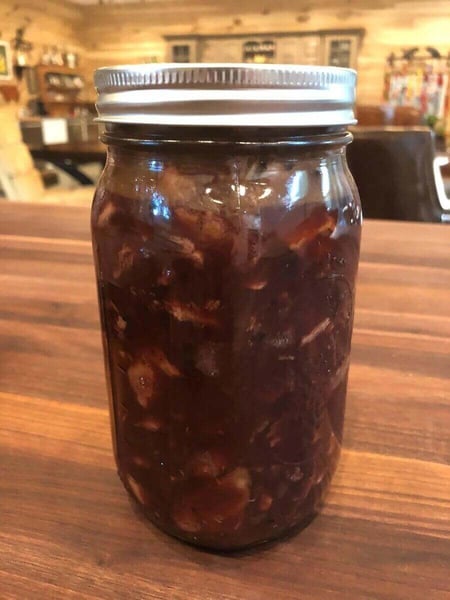
I hope you enjoy these ideas and feel free to share your recipe ideas and your mushroom foraging stories and lore in the comments below.


